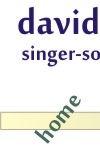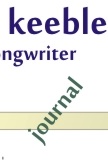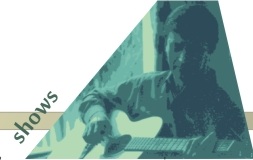Notes on "Riel"
This piece happened during my second year at UBC Music School, when James Fankhauser, the conducter of the Choral Union, asked me if I would write a piece for the choir. I was very excited about that - but it was another example of how open UBC was to student composers.
The choir was 110 voices. I sang in it. Prof. Fankhauser asked me to offer "rhythmic challenges but not pitch difficulties." That meant, don't make the soprano sing high A for 90 seconds, and don't make anybody enter on a note they can't hear from the context. Weird pitch was pretty common in new pieces at the time.
'Commission' in hand, I went looking for a text. I normally browsed the poetry sections of bookstores, and it wasn't long before I came across "Riel: a poem for voices" by Don Gutteridge. It looked perfect. I was moved by the story of Louis Riel - as a good leftist, I knew something about the north-west rebellions. The poem was written to be lifted off the page. As an added bonus, I thought - mistakenly - that it had been written by someone I knew; actually, it was a different Don Gutteridge. And when I opened the book, I could see lots of possibilities: the beautiful language spoke to me immediately. The fact that Riel himself speaks in the poem made for a soloist possibility.
I got in touch with the real poet Don Gutteridge, who agreed to my having a try with his work. It had been performed already as a radio play but no one had tried setting any of it to music, and he was very open to it.
As I started to work, I immediately saw it as several movements based on Riel's final trial,
- an atmospheric opening invocation, with choir and instruments,
- and then moving straight into a picture of Riel at his trial - he speaks about it in Gutteridge's words, and then a speaking chorus, representing the Metis nation,
- a fast rhythmic movement meditating on death and the land, "death is in the wheat",
- then "the prisoner addresses the jury"; Riel speaks, in what I believe is an actual excerpt from his words at the trial, but with the choir singing behind him, segueing into
- the "death song" which ends the piece.
I don't think I've ever had a bigger musical thrill than listening in the hall as the choir began rehearsing this piece. It begins with breathy whistling and the sound of 100 voices doing that was totally sonic dessert. There is much imagery of prairie wind in the piece. The first movement is the Song of the Northern Dancer, cited as a Cree chief's song, which begins with the evocative phrase "wind is north", and ends with the prayer, "let my blood be wind". So the whistling comes from there, as did my choice of wind quintet and piano for the accompaniment.
The first performance went very well, and to my surprised pleasure it got picked up for subsequent performances too. Jon Washburn heard it and chose it for the Amity Singers in Victoria, and then again with the Vancouver Chamber Choir in the CBC Festival in 1976. That's the performance recorded here, and later broadcast.






